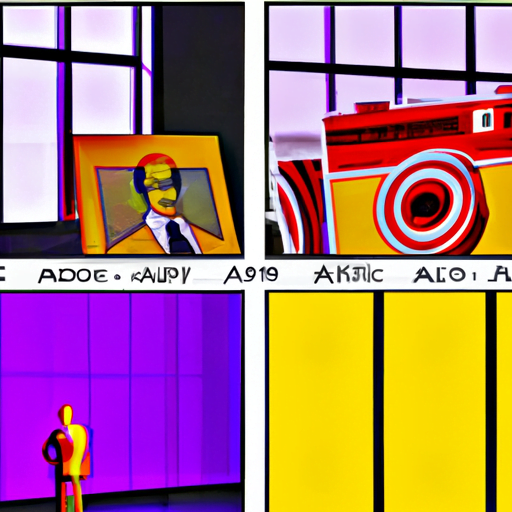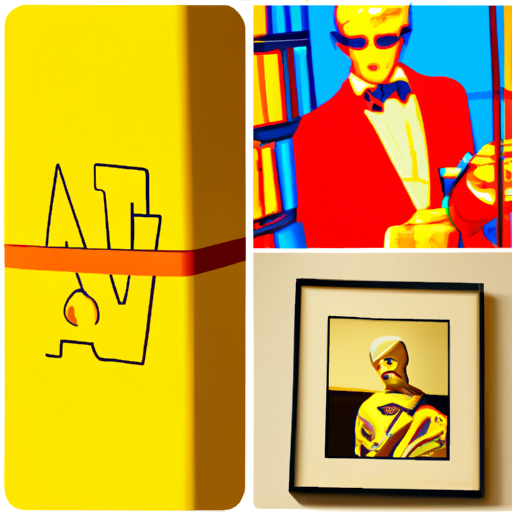
-
Table of Contents
- The Art of Visual Storytelling in Graphic Novels
- The Power of Visuals in Storytelling
- Case Study: “Watchmen” by Alan Moore and Dave Gibbons
- Techniques of Visual Storytelling in Graphic Novels
- Example: “Maus” by Art Spiegelman
- The Impact of Visual Storytelling in Graphic Novels
- Statistics: The Rise of Graphic Novels
- Summary
The Art of Visual Storytelling in Graphic Novels

Graphic novels have become a popular medium for storytelling, captivating readers with their unique blend of visuals and narrative. The combination of illustrations and text allows for a rich and immersive storytelling experience that engages the reader’s imagination. In this article, we will explore the art of visual storytelling in graphic novels, examining its techniques, impact, and the reasons behind its enduring popularity.
The Power of Visuals in Storytelling
Visual storytelling has been a fundamental part of human communication since ancient times. From cave paintings to hieroglyphics, images have served as a powerful tool for conveying stories and ideas. In the context of graphic novels, visuals play a crucial role in enhancing the narrative and evoking emotions.
Unlike traditional novels, graphic novels rely on a combination of images and text to convey the story. The illustrations provide a visual representation of the characters, settings, and events, while the text complements and expands upon the visuals. This dual approach allows for a more dynamic and engaging storytelling experience.
Case Study: “Watchmen” by Alan Moore and Dave Gibbons
An exemplary graphic novel that showcases the power of visual storytelling is “Watchmen” by Alan Moore and Dave Gibbons. Through its intricate illustrations and meticulous attention to detail, “Watchmen” immerses readers in a dystopian world filled with complex characters and moral dilemmas.
The use of panel layouts, color schemes, and visual motifs in “Watchmen” adds depth and symbolism to the narrative. For instance, the recurring image of a blood-stained smiley face serves as a haunting symbol throughout the story, representing the blurred lines between heroism and villainy.
Techniques of Visual Storytelling in Graphic Novels
Graphic novels employ various techniques to effectively convey stories visually. These techniques include:
- Panel Layout: The arrangement of panels on a page determines the pacing and flow of the story. Panels can be organized in a grid-like structure for a straightforward narrative or creatively arranged to create a sense of movement or tension.
- Composition: The composition of each panel, including the placement of characters and objects, influences the reader’s focus and emotional response. A close-up shot of a character’s face can convey their emotions more effectively than a distant shot.
- Color and Lighting: The choice of color palette and lighting techniques can set the mood and atmosphere of a scene. Warm colors may evoke a sense of comfort or nostalgia, while cool colors can create a feeling of unease or tension.
- Symbolism: Visual symbols can be used to convey deeper meanings and themes. For example, a recurring image or object may represent a character’s internal struggle or a central theme of the story.
Example: “Maus” by Art Spiegelman
“Maus” by Art Spiegelman is a graphic novel that masterfully employs visual storytelling techniques. The use of animal metaphors, with Jews depicted as mice and Nazis as cats, adds a layer of symbolism to the narrative. The black and white artwork further enhances the starkness and emotional impact of the story.
The Impact of Visual Storytelling in Graphic Novels
The art of visual storytelling in graphic novels has had a profound impact on both readers and the broader literary landscape. Here are some key reasons behind its enduring popularity:
- Engaging and Accessible: The combination of visuals and text makes graphic novels more accessible to a wider audience, including reluctant readers and those who prefer a more visual storytelling experience.
- Emotional Resonance: The visual nature of graphic novels allows for a more immediate and visceral emotional connection with the story. The illustrations can convey emotions and experiences in a way that words alone may struggle to achieve.
- Visual Memory: The use of visuals in graphic novels enhances the reader’s ability to remember and recall the story. The combination of images and text creates a more vivid and lasting impression in the reader’s mind.
- Artistic Expression: Graphic novels provide a platform for artists to showcase their unique visual styles and experiment with different artistic techniques. This artistic freedom adds depth and diversity to the medium.
Statistics: The Rise of Graphic Novels
The popularity of graphic novels has been on the rise in recent years. According to a report by the NPD Group, graphic novel sales in the United States reached $1.21 billion in 2019, a 16% increase from the previous year. This growth can be attributed to the expanding readership and the recognition of graphic novels as a legitimate form of literature.
Summary
Graphic novels are a unique form of storytelling that combines visuals and text to create immersive and engaging narratives. The power of visual storytelling lies in its ability to evoke emotions, convey complex ideas, and provide a memorable reading experience. Techniques such as panel layout, composition, color, and symbolism enhance the storytelling in graphic novels.
The impact of visual storytelling in graphic novels is evident in their accessibility, emotional resonance, and ability to leave a lasting impression on readers. The rise in popularity of graphic novels is a testament to their artistic and literary value. As the medium continues to evolve, graphic novels will undoubtedly remain a powerful and influential form of storytelling.
